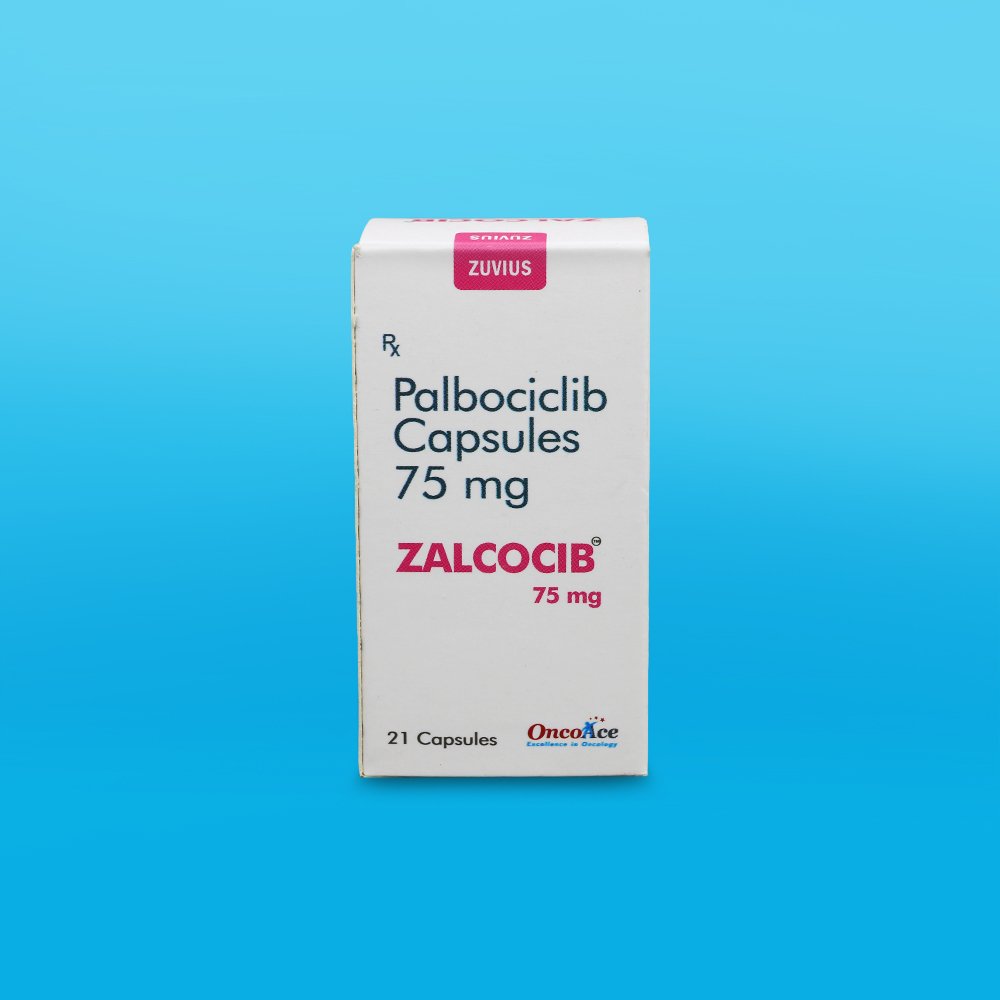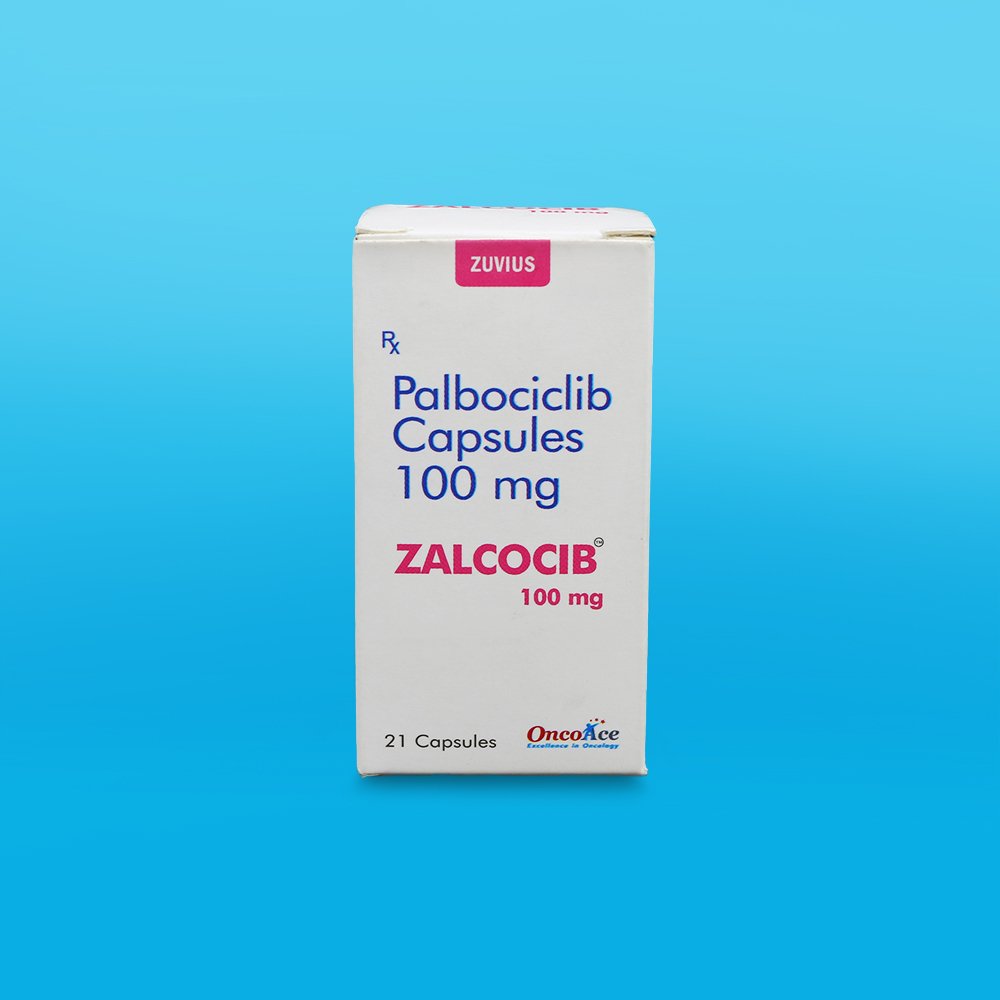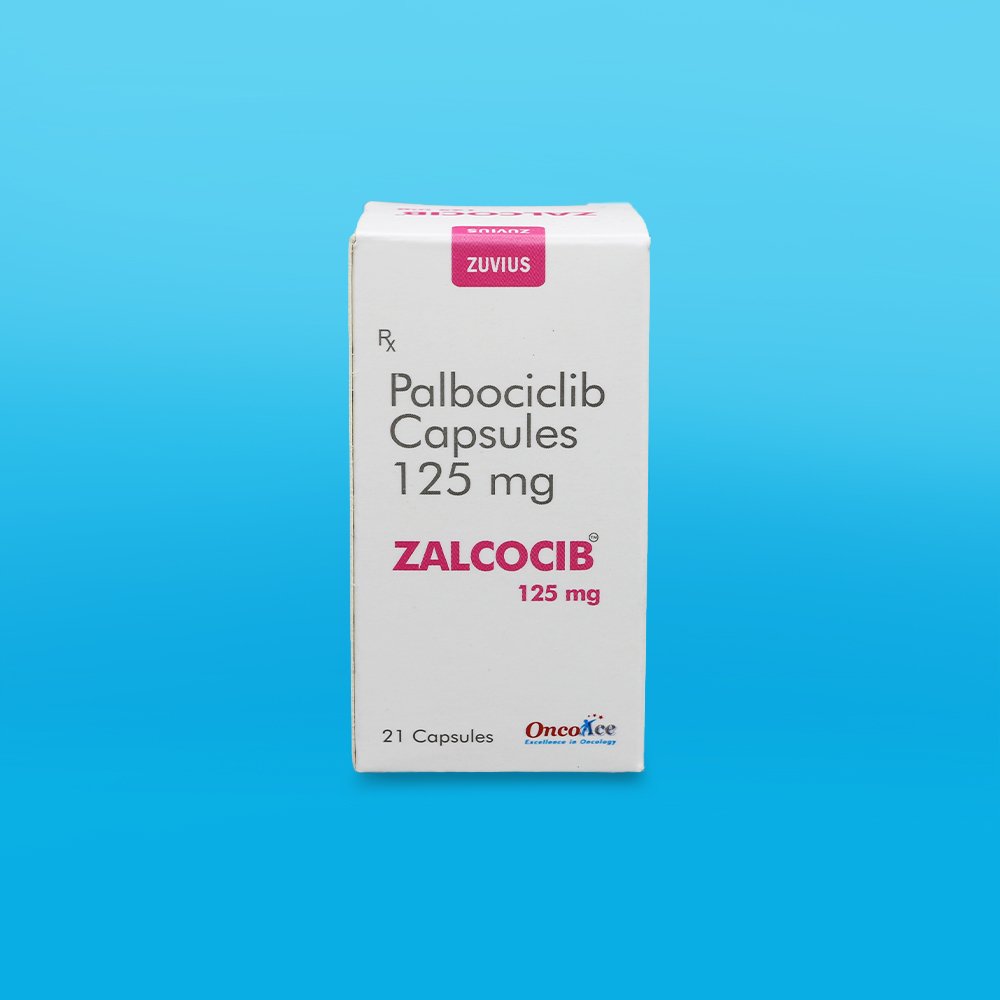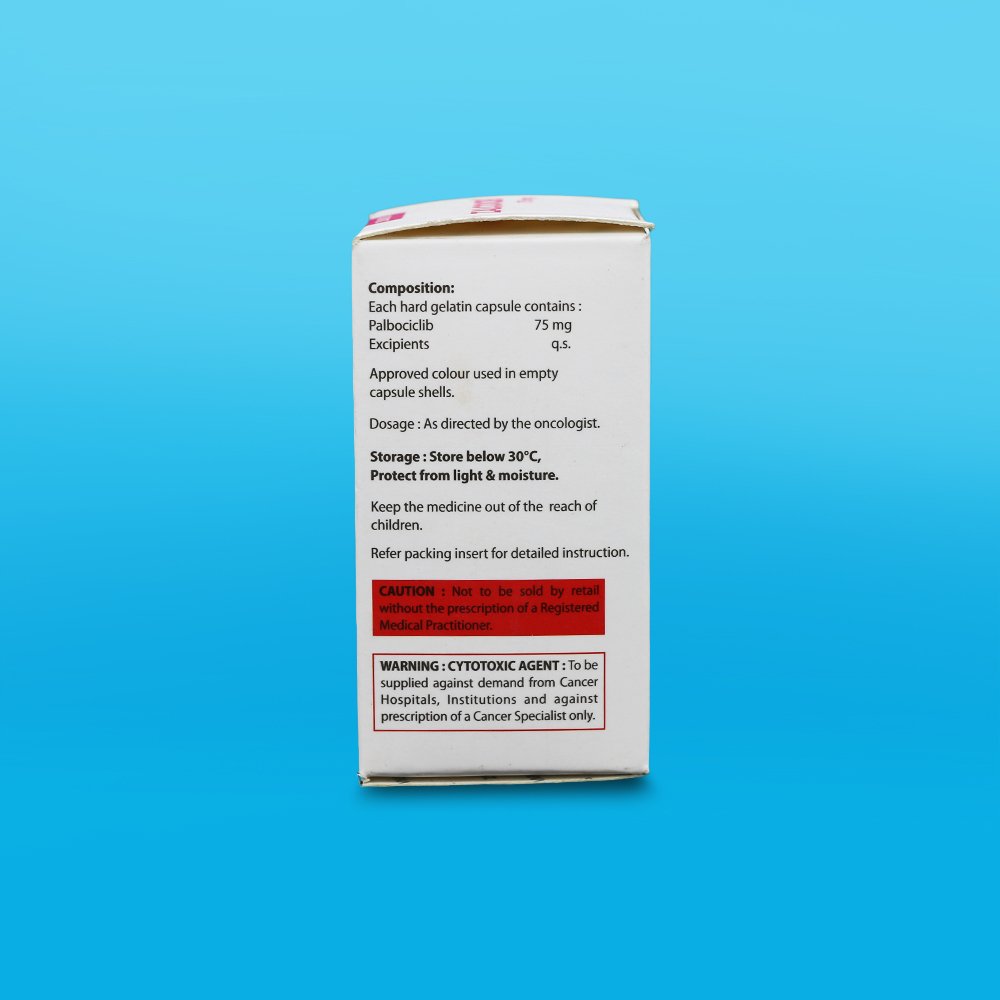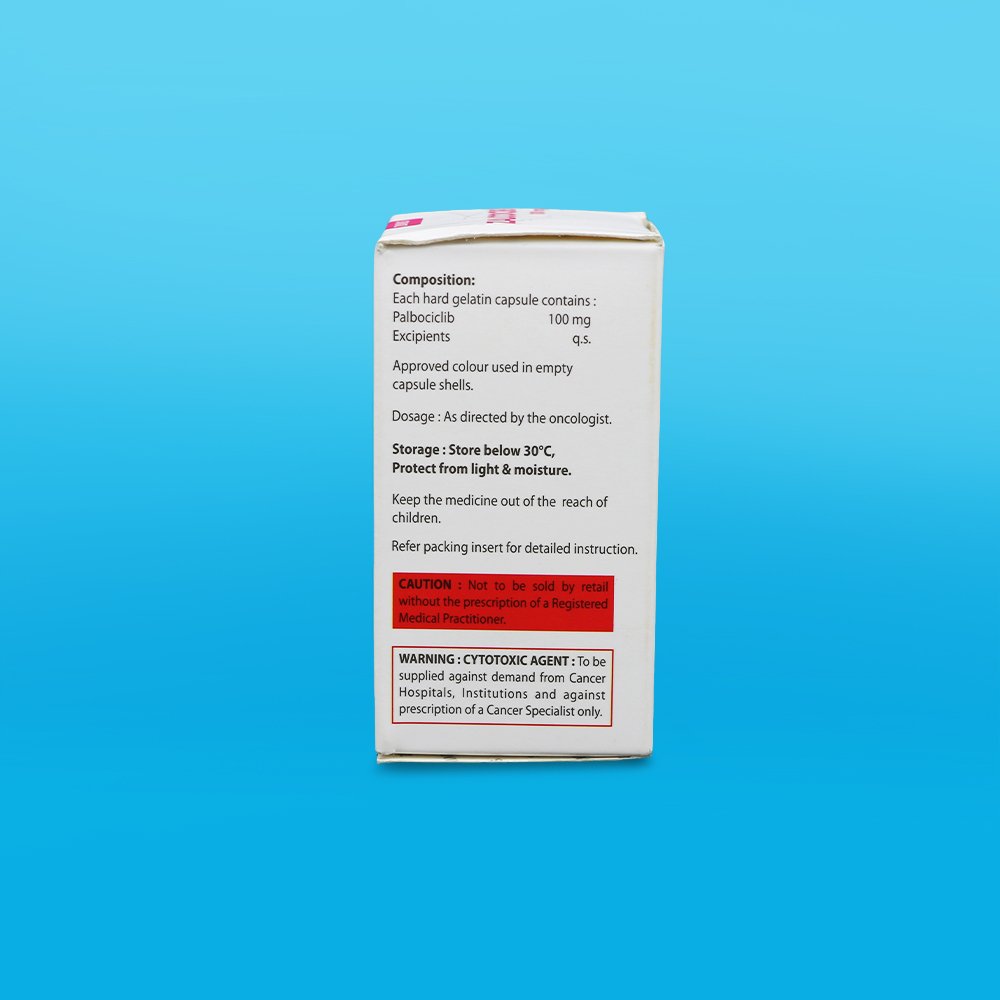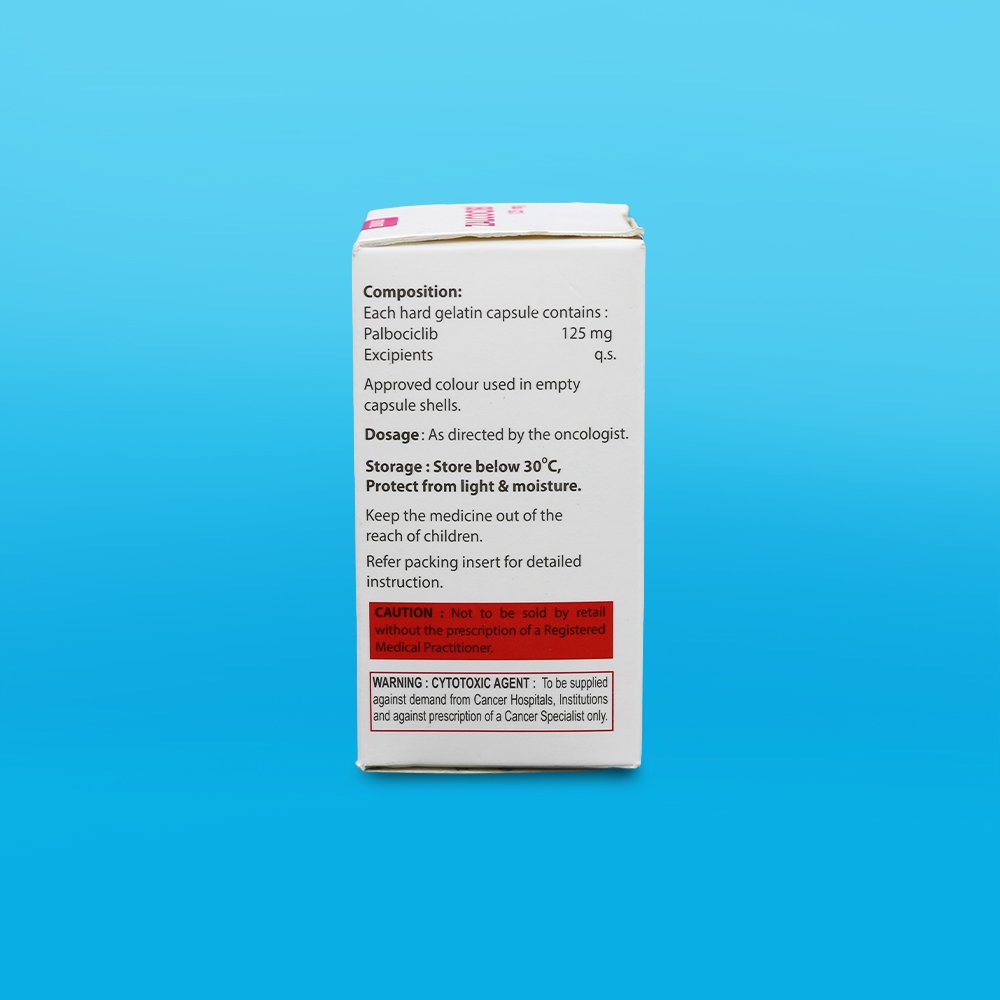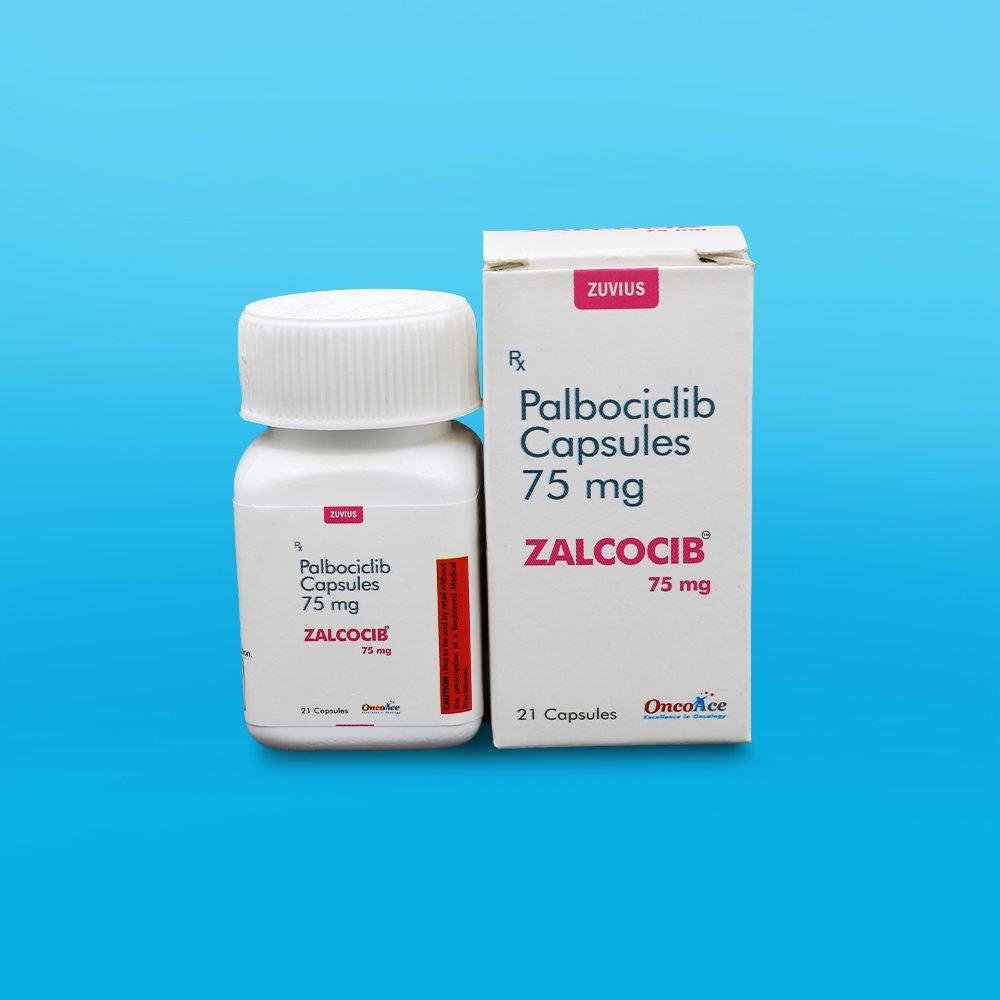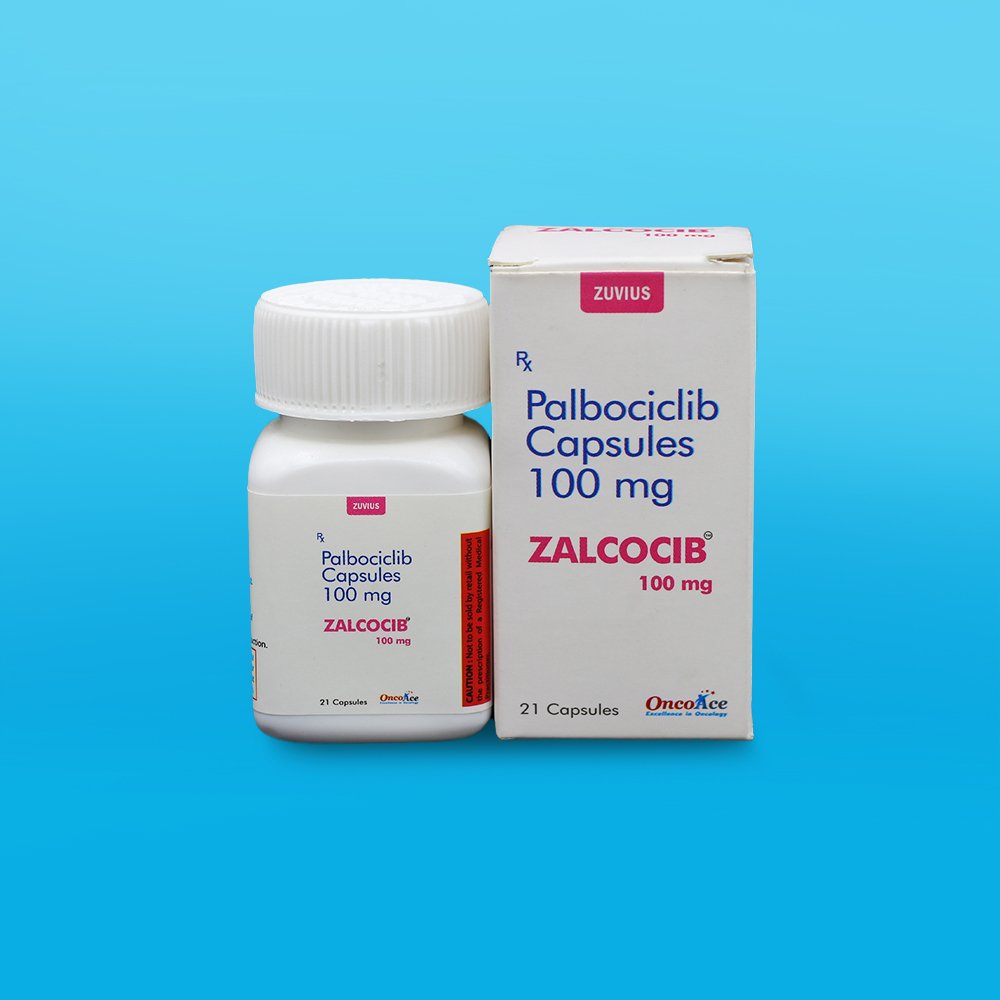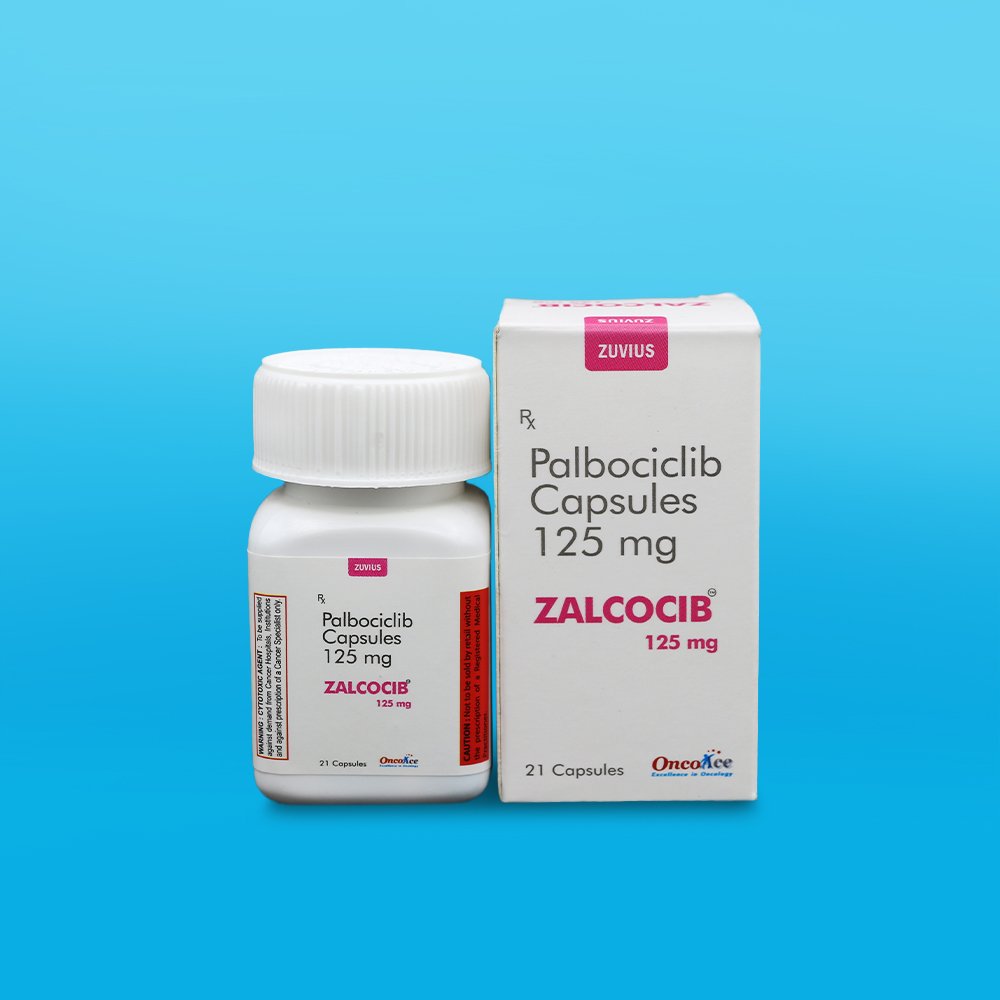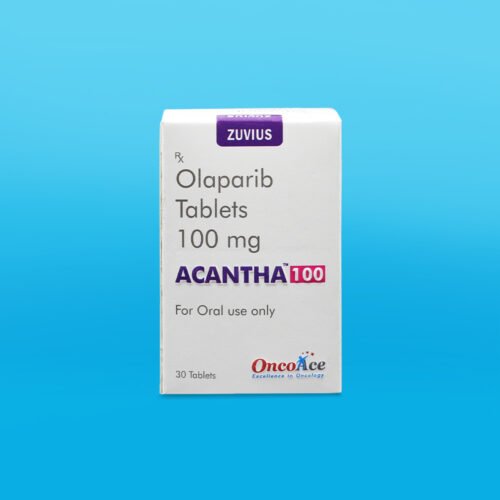Zalcocib- Palbociclib Cap.
Palbociclib Cap.
Strength: 75, 100, 125mg
Pack Size: 1 x 21
Drug Class: Antineoplastics CDK Inhibitors
Dosage and Administration:
The recommended dose of Zalcocib is a 75mg / 100mg /125 mg tablet taken orally once daily for 21 consecutive days followed by 7 days off treatment to comprise a complete cycle of 28 days. Zalcocib tablet may be taken with or without food.
Patients should be encouraged to take their dose of Zalcocib at approximately the same time each day.
If the patient vomits or misses a dose, an additional dose should not be taken. The next prescribed dose should be taken at the usual time. Zalcocib tablets should be swallowed whole (do not chew, crush, or split them prior to swallowing). Tablets should not be ingested if they are broken, cracked, or otherwise not intact.
Cold Storage: no
Zalcocib is a prescription medicine used to treat the symptoms of Breast Cancer. Zalcocib may be used alone or with other medications.
Zalcocib belongs to a class of drugs called Antineoplastics, CDK Inhibitors.
It is not known if Ibrance is safe and effective in children.
Zalcocib is indicated for the treatment of adult patients with hormone receptor (HR)-positive, human epidermal growth factor receptor 2 (HER2)-negative advanced or metastatic breast cancer in combination with:
- an aromatase inhibitor as initial endocrine-based therapy in postmenopausal women or in men; or
- fulvestrant in patients with disease progression following endocrine therapy.
Palbociclib is an inhibitor of cyclin-dependent kinases (CDK) 4 and 6. Cyclin D1 and CDK4/6 are downstream of signaling pathways which lead to cellular proliferation.
Treatment of breast cancer cell lines with the combination of palbociclib and antiestrogens leads to decreased retinoblastoma (Rb) protein phosphorylation resulting in reduced E2F expression and signaling, and increased growth arrest compared to treatment with each drug alone.
Human bone marrow mononuclear cells treated with palbociclib in the presence or absence of an anti-estrogen in vitro did not become senescent and resumed proliferation following palbociclib withdrawal.
- Read the label carefully before use
- Keep out of the reach of children
- Do not exceed the recommended dose
Embryo-Fetal Toxicity
Based on findings from animal studies and its mechanism of action, IBRANCE can cause fetal harm when administered to a pregnant woman. In animal reproduction studies, administration of palbociclib to pregnant rats and rabbits during organogenesis resulted in embryo-fetal toxicity at maternal exposures that were ≥4 times the human clinical exposure based on area under the curve (AUC). Advise pregnant women of the potential risk to a fetus. Advise females of reproductive potential to use effective contraception during treatment with IBRANCE and for at least 3 weeks after the last dose
Interstitial Lung Disease (ILD)/Pneumonitis
Severe, life-threatening, or fatal interstitial lung disease (ILD) and/or pneumonitis can occur in patients treated with cyclin-dependent kinase 4/6 (CDK4/6) inhibitors, including IBRANCE when taken in combination with endocrine therapy.
Pregnancy, Lactation, And Infertility
- Embryo-Fetal Toxicity
- Advise females of reproductive potential of the potential risk to a fetus and to use effective contraception during treatment with IBRANCE therapy and for at least 3 weeks after the last dose. Advise females to inform their healthcare provider of a known or suspected pregnancy

